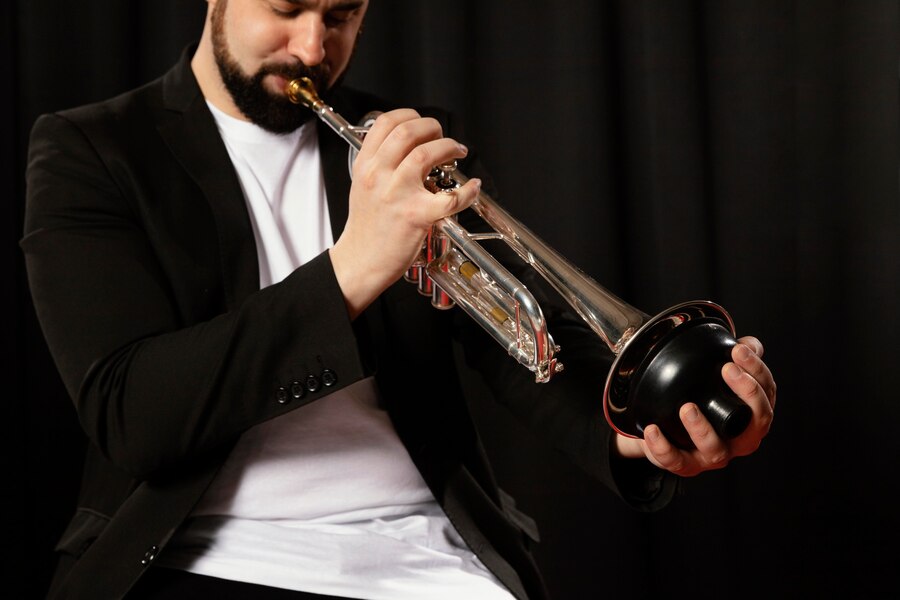ENTERTAINMENT
La People 2 English Lyrics: Meaning and Global Impact

The song “La People 2” has captured the hearts of listeners worldwide, becoming a cultural phenomenon for its infectious beat and relatable lyrics. With its distinct sound, it bridges different musical traditions and draws in a global audience. For English-speaking fans, translating the lyrics reveals a world of meaning, emotion, and cultural references. Here’s a deep dive into the English lyrics of “La People 2,” uncovering the story and themes that have driven its popularity.
What Is “La People 2”?
“La People 2” is more than just a catchy tune; it’s a song rich in story and cultural expression. Originating from Latin music, it combines elements of reggaeton, pop, and traditional Latin rhythms, setting it apart in today’s music landscape. But the lyrics are what resonate deeply, especially as fans around the world seek translations to understand its core message.
Released by a prominent artist known for blending Latin and global influences, “La People 2” speaks to universal themes of love, struggle, and the search for belonging. This mix of relatable content and infectious rhythm explains why it has garnered millions of streams, climbed charts, and found its way into playlists everywhere.
Translating the Lyrics: What Do “La People 2” Lyrics Mean?
To fully grasp the impact of “La People 2,” it’s essential to understand the lyrics. Below is a rough English translation of the song’s verses, offering insight into its emotional depth:
Verse 1 (English Translation): “In a world so wide, I feel so small,
Lost among the lights, as shadows fall.
I search for a face, someone I know,
But in this crowd, I’m still alone.”
Chorus: “La people, la people, I see you there,
In your gaze, I find hope in the air.
We’re bound by stories, you and I,
Under the same sky, we reach high.”
The verses reflect themes of isolation, self-discovery, and the hope found in others. Lines such as “Lost among the lights, as shadows fall” speak to the experience of feeling alone even in a crowded space. Yet, the chorus brings a hopeful turn, emphasizing connection and unity with “la people,” or “the people.” This call to unity is one of the song’s defining traits, creating a bridge between cultures and experiences.
Why “La People 2” Resonates Globally
So, what makes “La People 2” so universally loved? It’s in the way the lyrics encapsulate common experiences. The themes of loneliness, self-exploration, and finding connection speak to listeners across different countries and cultures. Many fans, regardless of their native language, identify with the song’s introspective lines and the hope it expresses for unity and understanding.
The cultural references within the lyrics add an authentic touch. Using “la people” is a nod to everyday language, grounding the song in the real-world experiences of Latin communities while also appealing to international fans. This dual appeal of the song’s lyrical content helps solidify its place in the global music arena.
Key Themes and Cultural References in “La People 2” Lyrics
To help visualize the song’s underlying messages, here’s a chart breaking down the main themes and references.
| Theme | Description |
|---|---|
| Loneliness | The feeling of isolation in a bustling world, relatable to listeners from all backgrounds. |
| Self-Discovery | Lines reflecting personal growth, encouraging listeners to seek their path amidst challenges. |
| Unity with “La People” | A call for connection and solidarity, emphasizing shared experiences and resilience. |
| Cultural Identity | A nod to Latin culture and community through the phrase “la people,” inviting global listeners. |
| Hope and Resilience | Positive outlook in the face of challenges, inspiring fans to reach for common ground. |
These themes combine to make “La People 2” more than just a song – it’s a unifying anthem.
Impact of “La People 2” on Music Trends
“La People 2” has had a notable influence on Latin music’s reach into English-speaking regions. Its success aligns with a broader trend: Latin artists and music are increasingly gaining mainstream attention worldwide. The lyrical focus on universal themes further reinforces the song’s appeal, inspiring other artists to create music that reaches across language barriers.
Latin music’s influence can be seen on streaming platforms, where “La People 2” has earned a place on multiple trending playlists. It continues to inspire remixes, covers, and dance challenges on social media, underscoring the ongoing impact of Latin music on pop culture and music trends.
La People 2 in Pop Culture: A Lasting Legacy
Beyond the charts, “La People 2” has found a unique space in pop culture. Its popularity has grown organically through social media platforms, especially among fans who resonate with its lyrics. From Instagram reels to TikTok dance challenges, the song has become a staple for creators celebrating its message of connection.
This cultural phenomenon speaks to the song’s versatility. Whether used as background music for videos or in dance routines, “La People 2” continues to captivate new listeners and bring communities together, helping break down cultural barriers through its universal themes.
Conclusion: la people 2 english lyrics
In an increasingly interconnected world, “la people 2 english lyrics” stands out as a song that transcends language and cultural differences. Its lyrics speak to shared experiences, while its rhythm compels listeners to connect. As English-speaking fans dive deeper into the translated lyrics, they find common themes of hope, unity, and resilience.
This cross-cultural appeal is why “La People 2” has become more than just a song – it’s a movement that brings people together. For those captivated by its themes, there’s a wealth of similar songs in the Latin music genre, waiting to be explored.
Suggested Listening:
- For fans who enjoyed “La People 2,” consider listening to other cross-cultural hits that share similar messages, like “Bailando” by Enrique Iglesias or “Hawái” by Maluma.
With each lyric, “La People 2” reminds us of the power of music to connect, inspire, and unite – proving that, sometimes, we all speak the same language through rhythm and verse.
ENTERTAINMENT
Seasonal Buying Cycles and Inventory Planning for Bulk Christmas Gifts

Effective inventory planning is essential for wholesalers and retailers with bulk Christmas gifts. This article explores managing the Christmas gift-buying timeline, making early-bird wholesale purchases, understanding order lead times, and implementing effective storage solutions for seasonal stock.
Understanding the Christmas Gift Buying Timeline
The Christmas season presents a significant opportunity for wholesalers and retailers but also introduces challenges. Proper timing ensures the right products are available immediately without overwhelming your inventory with unsold stock.
Early-Bird Wholesale Purchases
Successful Christmas gift sales begin well before the holiday season kicks in. Early-bird wholesale purchases ensure products are available in time for pre-holiday shopping. Retailers and wholesalers who secure their inventory ahead of time are more likely to avoid stockouts during peak demand periods.
Bulk buying should typically take place from July to September. This provides sufficient time for manufacturers to fulfill orders, allowing wholesalers to plan for storage and distribution.
Understanding Lead Times and Delivery Schedules
Lead times—the time it takes to manufacture and ship products—play a crucial role in inventory planning, especially for international orders. A clear understanding of lead times helps prevent delays and stockouts.
Domestic orders usually range from a few weeks to a month. International lead times are typically longer due to shipping and customs processes. Depending on the origin and destination, these can range from one to three months.
Avoiding Stockouts and Overstocks During Peak Season
One of the most significant challenges of holiday inventory planning is balancing the need to meet high demand with the risk of carrying excess stock.
Implementing Effective Storage Solutions
Proper seasonal stock storage is crucial to maintain product quality and accessibility during peak season.
- Warehouse Organization: Organizing the warehouse is essential, especially when you have many products. Categorize products by type, size, and demand. Place high-demand items near the front for easy access.
- Climate-Controlled Storage: Some products, such as delicate or perishable items, require special storage conditions like temperature or humidity control. Investing in climate-controlled storage ensures that products are preserved in optimal conditions.
Handling Stockouts and Overstocks
Even with careful planning, stockouts and overstocks can still occur. Here’s how to handle them effectively:
- Stockouts: If an item runs out of stock, offer alternatives or pre-order options to ensure customers will receive their desired product once it’s available again.
- Overstocks: Excess inventory can be cleared through sales, discounts, or product bundling. Consider working with online platforms or offering gift sets to move slow-moving items.
Post-Season Inventory Management
Once the holiday season ends, it’s time to manage leftover inventory. While the goal is to sell as much as possible during the season, some stock will remain, and it’s essential to manage it effectively.
Clearance sales offer a way to move unsold stock quickly. Offering discounts on leftover products can help recover costs and free up storage space for the next cycle.
Key Takeaways
Managing seasonal buying cycles and inventory planning for bulk Christmas gifts requires strategic foresight, accurate demand forecasting, and practical storage solutions. Planning ensures that your business is ready to capitalize on the holiday shopping season while maintaining operational efficiency year-round.
ENTERTAINMENT
Why Are Pipe Organs So Inspiring? Majesty of a Musical Marvel

Introduction
Few musical instruments command the same awe and reverence as the pipe organ. Whether found in grand cathedrals, historic concert halls, or modern performance venues, pipe organs evoke a sense of majesty, spirituality, and artistic mastery. But why are pipe organs so inspiring? In this article, we explore their rich history, incredible craftsmanship, and powerful emotional impact that continues to captivate audiences worldwide.
The History and Evolution of Pipe Organs
Origins in Ancient Times
The roots of the pipe organ trace back to ancient Greece, where the hydraulis, a water-powered organ, was first developed around 250 BCE. Over centuries, this early invention evolved into the grand, air-powered instruments we recognize today.
Medieval and Renaissance Influence
During the Middle Ages, pipe organs became a fixture in European churches. As craftsmanship improved, organs grew in complexity, incorporating multiple manuals (keyboards), stops, and pipes of varying sizes to create a richer tonal palette.
Baroque Era and the Golden Age
The Baroque period (1600–1750) was the golden age of organ music, with legendary composers like Johann Sebastian Bach pushing the instrument’s capabilities to new heights. The intricate fugues and compositions written for pipe organs during this era remain some of the most revered pieces in classical music history.
The Engineering Marvel Behind Pipe Organs
A Symphony of Pipes
A typical pipe organ consists of thousands of pipes, each producing a unique sound. Pipes are made from wood or metal and vary in size, with some reaching over 30 feet in height.
The Role of Stops and Manuals
Stops allow organists to control airflow and select specific groups of pipes, enabling a vast range of tonal variations. Larger organs have multiple manuals, expanding the range of expression and complexity.
Wind System and Bellows
Modern pipe organs use electric blowers to provide a steady air supply, but traditional bellows systems required manual pumping. The precise regulation of air pressure ensures a balanced and dynamic sound output.
Why Do Pipe Organs Inspire Such Profound Emotions?
1. Majestic Soundscapes
The sheer power and depth of sound produced by a pipe organ can fill vast spaces, creating an immersive and emotional experience. The organ’s ability to mimic an orchestra adds to its grandeur.
2. Spiritual and Mystical Associations
For centuries, pipe organs have been central to religious and ceremonial music, instilling a deep sense of reverence and spirituality. The resonance of an organ in a cathedral setting often evokes profound emotional responses.
3. Artistic and Architectural Grandeur
Beyond their musical function, pipe organs are often masterpieces of craftsmanship and design, blending artistry with engineering. The intricate facades, towering pipes, and elaborate woodwork make them visually stunning.
Pipe Organs in Popular Culture and Modern Music
While traditionally associated with classical and sacred music, pipe organs have found their place in modern genres. From rock and progressive music (e.g., Pink Floyd’s use of organ sounds) to film scores (such as in horror and dramatic cinema), their versatility continues to captivate contemporary audiences.
A Comparative Look: Pipe Organs vs. Other Keyboard Instruments
| Feature | Pipe Organ | Piano | Synthesizer |
|---|---|---|---|
| Sound Production | Air through pipes | Hammer on strings | Digital/electronic |
| Dynamic Range | Extremely wide | Wide | Variable |
| Expression | Controlled by stops and pedals | Weighted keys | Digital modulation |
| Longevity | Centuries | Decades | Rapid technological changes |
| Musical Role | Orchestral substitute, sacred & classical music | Solo & ensemble performance | Studio & live electronic music |
The Future of Pipe Organs
With advancements in digital technology, some modern organs incorporate MIDI interfaces and digital sampling, making them more accessible while preserving their traditional sound. Efforts to restore historic organs ensure that these magnificent instruments continue to inspire generations to come.
Conclusion: Why Are Pipe Organs So Inspiring?
The pipe organ’s ability to stir emotions, its unparalleled complexity, and its deep cultural significance make it one of the most awe-inspiring musical instruments ever created. Whether in a grand cathedral or a modern concert hall, the sound of a pipe organ is a testament to human ingenuity and artistic expression.
ENTERTAINMENT
88s Tour What String Color: The Secret to Perfect Sound Quality

Introduction
In the world of stringed instruments, every detail contributes to the sound quality—one of the most subtle yet impactful elements being the string color. If you’re part of the 88s Tour or simply someone trying to elevate their musical performance, understanding the influence of string color on tone and resonance is crucial. This article unravels the mystery behind string color choices, offering expert advice and practical insights to help you select the perfect strings for your instrument.
What Is the Significance of String Color?
When we think of musical strings, the first thing that often comes to mind is their material and tension. However, string color plays a pivotal role in the overall sonic experience. Whether you play guitar, bass, or another stringed instrument, the color of your strings can affect:
- Tone Quality: The material used and its color often correlate with the tonal quality produced.
- Visibility: String color can help improve your visual cues on stage, especially during live performances.
- Style and Aesthetic: Many musicians choose strings that complement their unique style or the theme of their performance.
String color may seem like a minor detail, but it’s part of a bigger conversation about sound, aesthetics, and performance.
How Do Different String Colors Affect Tone and Performance?
While string color may seem purely cosmetic, it has a surprisingly significant impact on sound. Different colors are associated with different string materials, which each offer their own set of tonal properties.
1. Standard Steel Strings
- Color: Typically silver or nickel-plated.
- Tone Impact: Bright, crisp, and clear tones with excellent sustain. These strings are ideal for genres that require sharp, cutting sounds such as rock or pop.
2. Coated Strings
- Color: These are often black or gold.
- Tone Impact: The coating provides additional durability and a slightly warmer tone. They’re perfect for players who need extra string longevity and don’t mind a slightly darker sound.
3. Color-Coated Strings
- Color: Strings are available in a wide variety of hues like red, blue, green, and purple.
- Tone Impact: The color itself doesn’t directly affect tone, but the underlying material can. These strings often offer a crisp and snappy tone, favored by players who value visual aesthetics during live performances.
Best Practices for Choosing the Right String Color
Choosing the right string color for your instrument isn’t just about aesthetics—it’s about finding a sound that suits your style. Here are some key factors to consider when making your decision:
1. Consider Your Genre
Your musical style plays a key role in the type of string you should choose:
- Classical and Jazz: Musicians often opt for traditional, muted colors that reflect the subtler tones required in these genres.
- Pop and Rock: Bright, colorful strings can help emphasize a bold, sharp sound that stands out in a mix.
2. Stage Visibility
For live performers, string color can help with visibility, making it easier to see finger placement and play with greater confidence. For instance, bright strings stand out more under stage lights, helping you with better finger positioning.
3. Durability
Coated strings or color-coated strings tend to last longer due to their protective layers. If you’re touring or playing regularly, these options could save you time and money on replacements.
Top String Color Options for the 88s Tour
For musicians performing on the 88s Tour, choosing the right string color goes beyond aesthetics—it’s about finding the perfect balance between performance, visibility, and tone.
1. Classic Silver or Nickel-Plated Strings
These strings are the standard for most stringed instruments. Their bright tone is perfect for capturing the audience’s attention in a live setting. They’re great for rock, pop, and experimental music.
2. Black Coated Strings
Many players prefer black-coated strings because they provide durability while maintaining a warmer tone. These are perfect for genres like blues, jazz, and R&B.
3. Color-Coated Strings
Color-coated strings, though not a tonal necessity, bring a vibrant pop to your performance. Available in red, blue, or even purple, they are often used by players who want to make a visual statement on stage.
Expert Recommendations for the 88s Tour
If you’re planning for a tour, string color should align with both practical and aesthetic considerations. Here are some recommendations based on expert advice:
- For Durability and Performance: Opt for black or gold-coated strings that can withstand the pressure of constant use.
- For Visual Appeal: If you’re looking to make a statement on stage, brightly colored strings like blue or red can complement your style and enhance the audience’s experience.
- For Tonal Precision: Nickel-plated steel remains the go-to for precision and clarity in a range of musical genres.
String Color Comparison Chart
| String Color | Tonal Impact | Genre Suitability | Visibility | Durability |
|---|---|---|---|---|
| Silver/Nickel-Plated | Bright, Crisp | Rock, Pop, Experimental | Medium | Medium |
| Black Coated | Warm, Rich | Blues, Jazz, R&B | High | High |
| Color-Coated | Crisp, Snappy | Pop, Funk, Experimental | Very High | Medium |
SEO and Meta Optimization
- Meta Title: “88s Tour What String Color: Find the Best Option for Your Performance”
- Meta Description: “Discover how string color impacts sound quality and performance on the 88s Tour. Get expert advice on selecting the perfect string color for your musical style.”
Conclusion: Your Next Step
The right string color for your instrument can make a surprising difference in both performance and appearance. Whether you’re on tour, in the studio, or simply playing for fun, choosing the ideal string color will enhance your playing experience.
Now that you’re equipped with knowledge on string colors, why not experiment with a few options and see which works best for you? Don’t forget to stay updated on the latest string technologies and trends by subscribing to our newsletter or reaching out for personalized advice.

 Cartoon1 year ago
Cartoon1 year agoUnlocking the Potential of Nekopoi.care: A Comprehensive Guide

 Game1 year ago
Game1 year agoExploring Aopickleballthietke.com: Your Ultimate Pickleball Destination

 BUSINESS1 year ago
BUSINESS1 year agoWhat Companies Are In The Consumer Services Field

 BUSINESS11 months ago
BUSINESS11 months agoUnraveling the Mystery of 405 Howard Street San Francisco charge on Credit Card

 HOME IMPROVEMENT1 year ago
HOME IMPROVEMENT1 year agoVtrahe vs. Other Platforms: Which One Reigns Supreme?

 TECHNOLOGY11 months ago
TECHNOLOGY11 months agoThe Guide to Using Anon Vault for Secure Data Storage

 ENTERTAINMENT8 months ago
ENTERTAINMENT8 months agoUnderstanding Bunkr Album: A Comprehensive Guide

 ENTERTAINMENT1 year ago
ENTERTAINMENT1 year agoThe Epic Return: Revenge of the Iron-Blooded Sword Hound
















